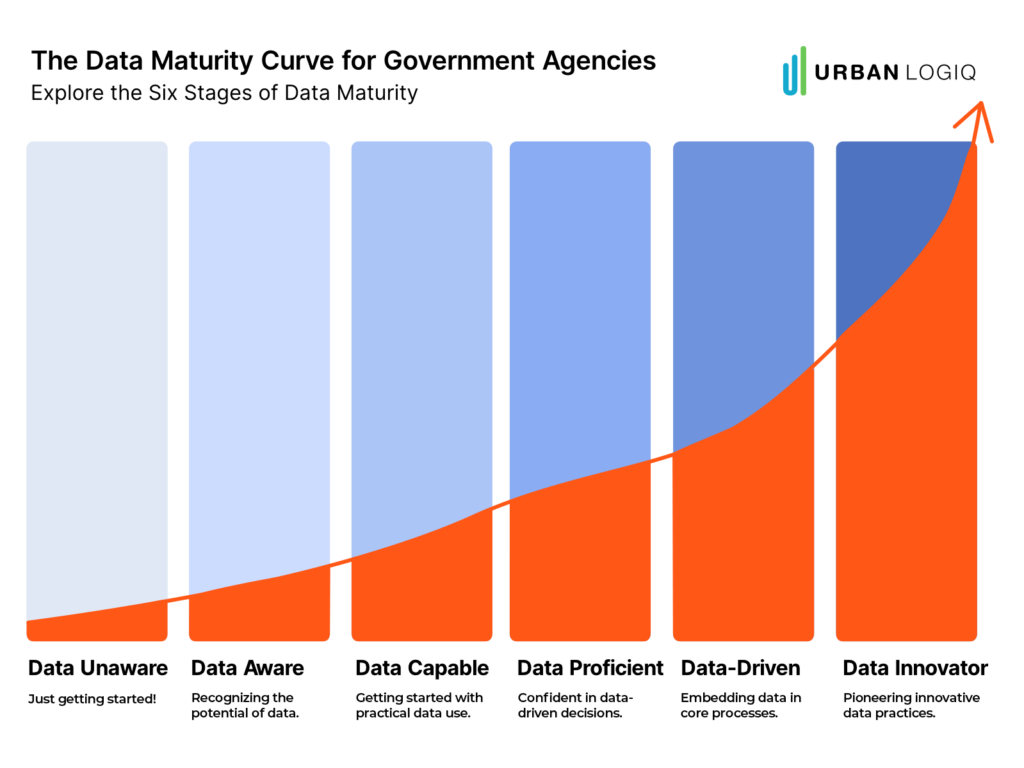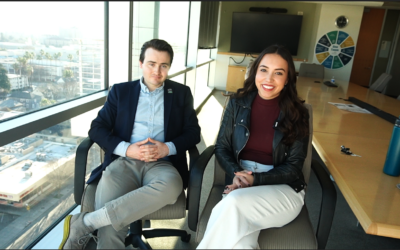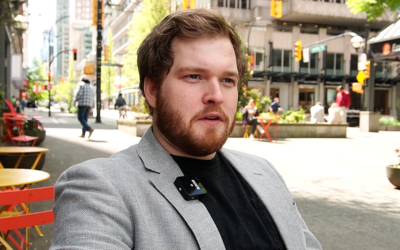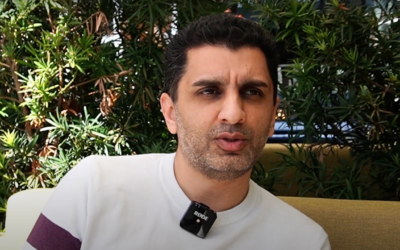Advancing Data Maturity: Strategies and Success Stories from the Texas Department of Transportation
In the latest episode of UrbanLogiq’s ‘Ask The Experts‘ series, we explore the concept of data maturity in public sector organizations. Our guest, David Tidwell, the Systems Support Branch Manager of the Traffic Safety Division at TxDOT, offers his insightful perspective on overcoming common obstacles and implementing effective strategies to guide any agency towards advancing their data proficiency.
 Meet the Expert: David Tidwell has been instrumental at the Texas Department of Transportation (TxDOT), in the Traffic Safety Division’s Traffic Management Section. Key accomplishments include the execution of the $22M Statewide Signal Connectivity Project and oversight of the DIIMS contract for Traffic Subject Matter Expertise. He introduced KPI dashboards for Traffic Management Operations and streamlined the Statewide Intelligent Traffic System Control, Lonestar. Additionally, he collaborated with the IT Division to standardize Traffic Network Monitoring and Asset Management. His work helped improve service quality and data collection.
Meet the Expert: David Tidwell has been instrumental at the Texas Department of Transportation (TxDOT), in the Traffic Safety Division’s Traffic Management Section. Key accomplishments include the execution of the $22M Statewide Signal Connectivity Project and oversight of the DIIMS contract for Traffic Subject Matter Expertise. He introduced KPI dashboards for Traffic Management Operations and streamlined the Statewide Intelligent Traffic System Control, Lonestar. Additionally, he collaborated with the IT Division to standardize Traffic Network Monitoring and Asset Management. His work helped improve service quality and data collection.
The meaning of data maturity
Data maturity represents an organization’s proficiency in leveraging data for insight-driven decision-making. Essentially, it encapsulates how proficient a business is at managing, processing, and using its data to its full potential.
Tidwell thinks about it in terms of evolution: the transition from raw, unrefined data to a form ready for effective use. The transformation process – converting raw data to a format that can be put to work – signifies ‘maturity’. In becoming more ‘data mature,’ data becomes a powerful tool within an organization that can be used to drive meaningful outcomes.
“Getting data to a point where it’s actually usable is getting it to that maturity level.” – David Tidwell Systems Support Branch Manager of the Traffic Safety Division at TxDOT.

Do you know where your organization fits along the curve?
Relationship building: key to overcoming resistance to change
Managing data across TxDOT’s 25 geographical districts presents a significant challenge. Tidwell highlights the issue in dividing the vast state into regions for local issues – each district creates unique data.
“You end up trying to fit the data together like a big puzzle, and not all the pieces are lining up.”- David Tidwell Systems Support Branch Manager of the Traffic Safety Division at TxDOT.
Tidwell suggests adopting enterprise solutions for better data alignment as a potential path towards achieving higher data maturity.
He stresses the importance of access to clean, structured data across districts, reducing data silos. Building strong relationships with grassroots individuals, departments, and vendors, who are responsible for data creation, is also essential.
He also adds that establishing those connections helps in circumventing resistance to change.
“Their obvious answer is, it works great for us now, so why should I change? You can’t get over those hurdles without those relationships.” David Tidwell Systems Support Branch Manager of the Traffic Safety Division at TxDOT.
Relationship building: key to understanding your data
Building relationships is an element for advancing data maturity within an organization. Moving up the ‘Data Maturity Curve’ involves collaboration, open communication, and shared goals among all data stakeholders. Their diverse insights and experiences are invaluable in understanding and interpreting data.
Tidwell recalls an instance when UrbanLogiq obtained data from another TxDOT division. The data was an Excel spreadsheet filled with cryptic acronyms instead of clear columns. He said it was impossible to decipher without context. However, the staff member demonstrating the data explained its meaning effortlessly since they dealt with it daily. Tidwell says this scenario highlights the issue of siloed information within organizations, especially prevalent in larger agencies or states.
“The bigger your agency, the bigger your state, the more siloing you’re going to get.”
According to Tidwell, developing relationships with knowledgeable experts is crucial for understanding and utilizing data effectively. Engaging with data providers and involving them in the creation process helps bridge the gap between data and its interpretation.
This collaboration not only enhances data quality but also promotes a culture of shared responsibility and knowledge transfer. In the quest for higher data maturity, nurturing relationships and fostering open communication serve as the crucial linchpin to unlock data’s true potential.
“We need to accept the fact that you can’t do things rapidly. You have to compensate by good documentation, those data dictionaries and breaking those silos down,” – Tidwell.
Navigating challenges and maintaining momentum
When striving for unity at TxDOT, Tidwell reflects on common hurdles that often emerge during the process.
According to Tidwell, people are more receptive to change when it aligns with their existing systems, minimizing the need for significant adjustments.
Another challenge, as Tidwell points out, stems from the turnover of key personnel and the slower pace of progress within the agency. With long-term infrastructure projects, it’s common for those who initiate them not to see them through to completion.
“So what you really have to do is make sure that you’re leveraging a lot of your visualizations, dashboards and stuff like that. When a new executive director comes on board, you can present and go, hey, here’s where we’re at in this particular project.”
“And get them up to speed rapidly so they understand so you don’t have to start from the ground up and get their buy-in.”
Tidwell says this approach can help maintain the momentum of a project even when there is a change in leadership.
Unlocking data maturity: starting small
Find a way to show off your data, says Tidwell. To embark on the path to data maturity, he emphasizes the importance of setting small goals that align with your agency’s key objectives.
“Don’t go after the huge win right off the bat. It has to be measurable. Attainable is the key factor here.”
Tidwell suggests demonstrating the value of just one dataset to demonstrate potential and gain organizational buy-in.
“You need to find something that’s valuable to your agency, something that’s an end goal. You’ll find that there’s a lot of cracks,” Tidwell asserts. “You’ll find that there’s maybe some missing data components. Just get one piece and show it to somebody that’s going to be around for a while that has the pull to help you get it moving and build on that.”
Collaboration is key
Tidwell recognizes that data maturity cannot be achieved alone. Building a dedicated team that values data-driven approaches is crucial. They must have the skills to extract insights from disparate siloed solutions and establish connections across datasets.
“Enterprise solutions really help clean up the data if they’re coming through a singular solution upfront. It just makes things better.”
Tidwell says working with UrbanLogiq exemplified this:
“Once UrbanLogiq got a hold of the data and started cleaning it up, then it was a fun game. I could say, what about this? Or this? What if we do this? Can we add this data to it?”
Tidwell says the collaboration sparked a stimulating back-and-forth where new ideas and additions to the dataset were explored. Tidwell says the realization also emerged that building solutions solely based on a singular data source, even as significant as TxDOT’s internal data, falls short.
“UrbanLogiq taught me that having external data sources to overlay really allowed you to fully see what normally was a two-dimensional puzzle turned into a three-dimensional puzzle once they brought in their data sources. And so having that external, multiple external data sources really helps. As your data matures, it helps it reach that full potential.”
But he warns because of the emerging technology, you need to work with both IT and traffic personnel.
“They have to work together in a hybrid solution or it won’t work.”
Increasing TxDOT’s data maturity
Advancing TxDOT’s data maturity is an ongoing mission. As Tidwell phrased it, “this is not an overnight solution. It’s a marathon, not a sprint. So get the right solutions in place.”
One project he is proud of that has shown immediate results is the implementation of an enterprise solution to monitor TxDOT’s 5,500 signals across the state, many come from different vendors and run on different software.
Now, that data is interpreted through one single source. Leveraging the data, TxDOT populated a dashboard, providing real-time visualization of signal status. With active monitoring, TxDOT can proactively address issues and improve the traveller experience.
“It’s a huge first for TxDOT. It’s a huge win and it helps us know that there’s a problem before we get the phone call from an irate traveller saying, hey, your signals are flash.”
While signals traditionally operated independently, Tidwell says connectivity enables remote monitoring of operational efficiency and adjustments based on changing traffic patterns.
“That allows you to finally kind of fine tune it so that if your traffic patterns have changed, you can know that by looking at it remotely as opposed to driving perhaps two hours out to that signal and seeing how it’s operating.”
How UrbanLogiq helps
UrbanLogiq’s mission is to break down data silos and help government agencies make the most out of their existing data. Our easy-to-use data platform creates one common operating picture of each community. This empowers public officials to make data-driven decisions faster and cheaper than traditional methods. UrbanLogiq brings together the best of data science, data engineering, and big data to help build safe and equitable communities.
Our story: https://youtu.be/hmp-eRd8OUg
About Ask the Experts
Urbanlogiq’s ‘Ask the Experts’ series launched in the summer of 2022. It taps into the knowledge of industry experts to explore a variety of subjects. These include engineering, data science, public safety, transportation planning, and more, offering insights on a variety of timely topics. ‘Ask the Experts’ sets out to provide valuable information and resources through in-person or virtual interviews and blogs.
If you would like to be a guest on the series, contact UrbanLogiq’s Communications Manager, Luisa Alvarez.


